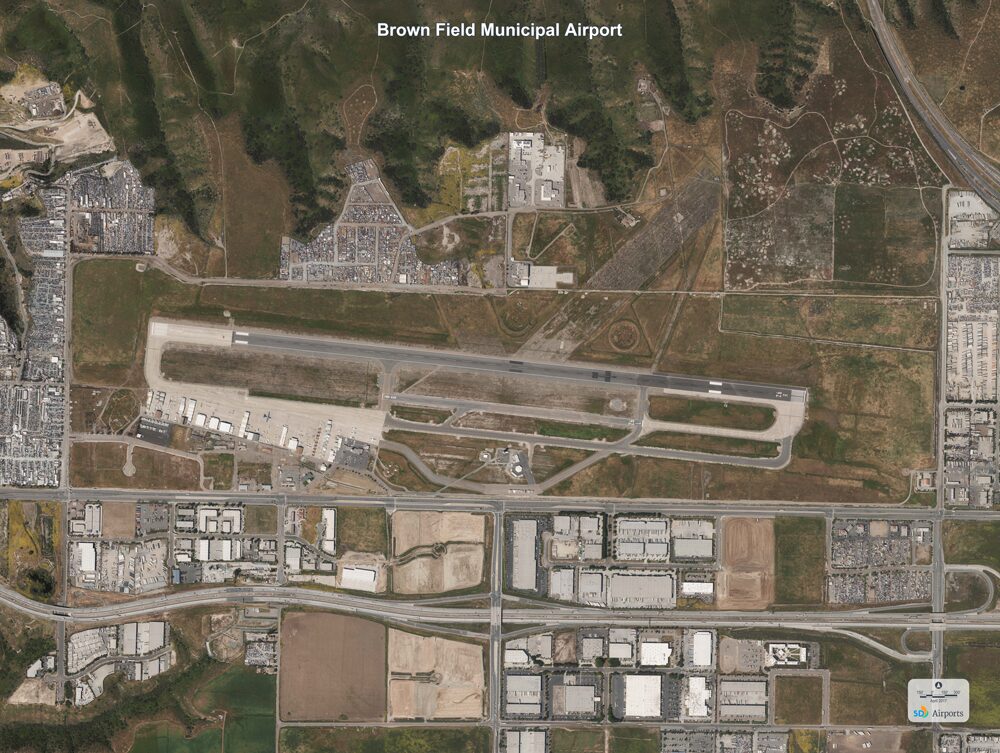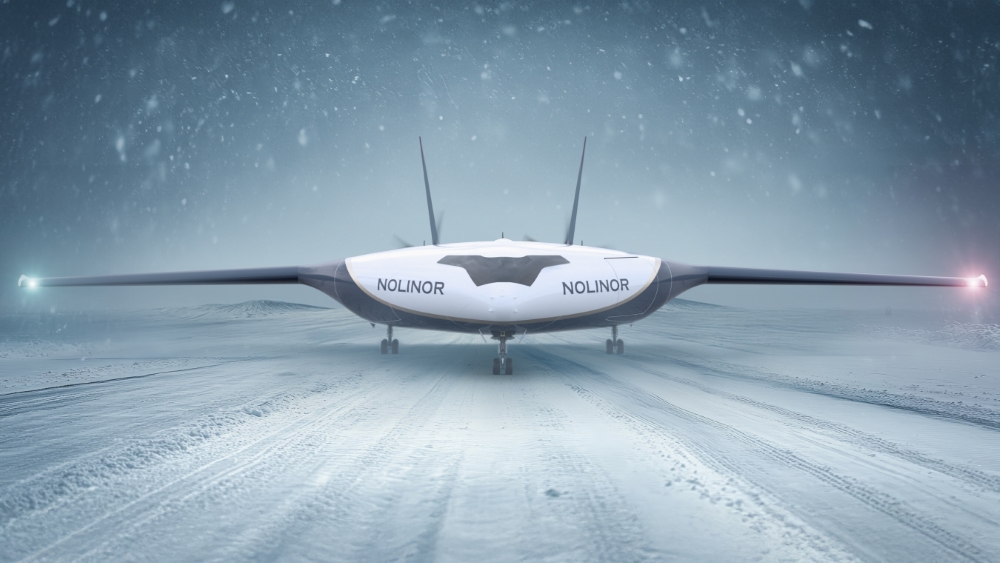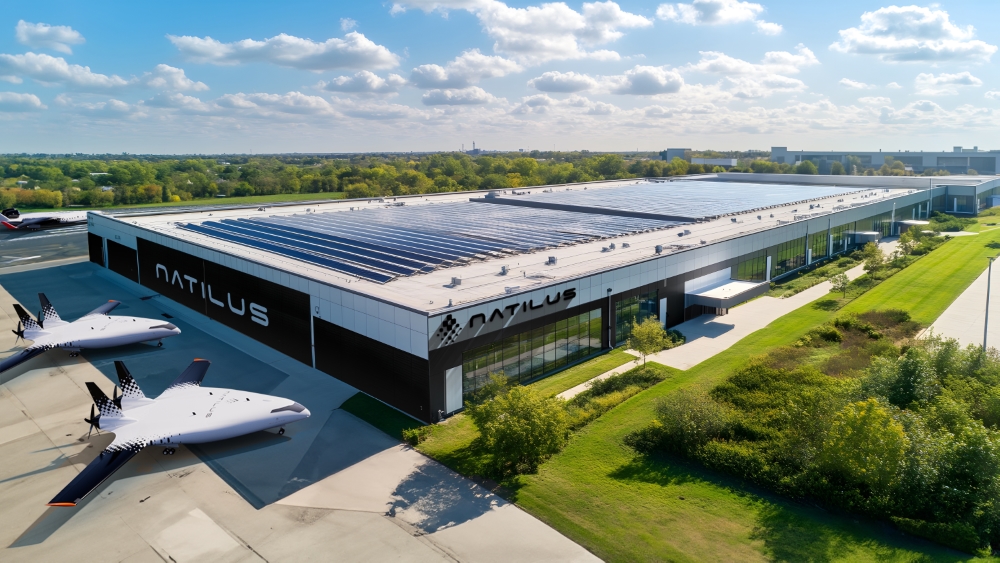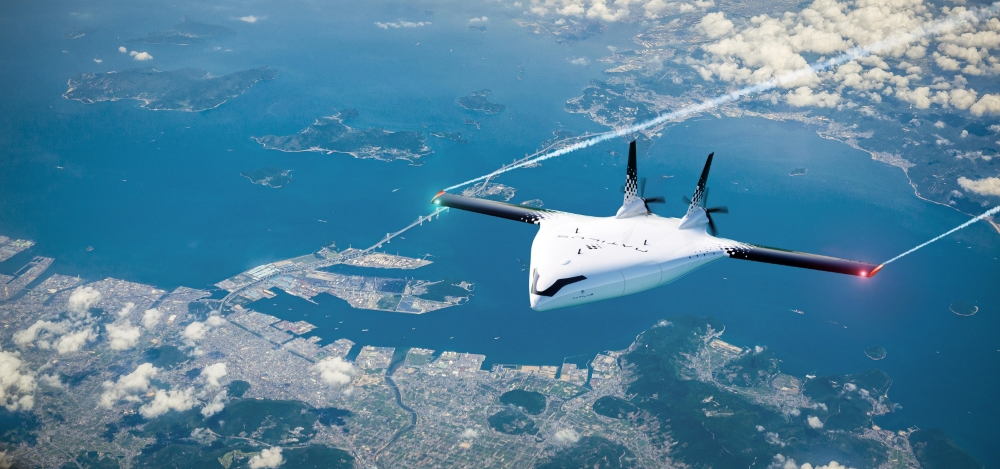It may also breed better offers for an innovative California company’s aircraft manufacturing operations.
Now publicly scouring the nation and the globe for potential sites, San Diego–based Natilus, maker of an innovative blended-wing-body (BWB) aircraft, announced this week it aims to build a 300-job, 250,000-sq.-ft. complex near an airport to make its KONA cargo freighter. The company plans to multiply those numbers by 10 for a second facility somewhere in the world to build a 200-passenger aircraft named HORIZON (similar in capacity to a Boeing 737).
I talked to CEO Aleksey Matyushev this week a day before the announcement. He said the company is working on both phases of the site selection at the same time with “one of the largest national brokerage firms” that will remain unnamed for the moment. But he did name one top priority in what he called “an open sweepstakes”: proximity to an airport and runway.
“It comes down to the airport and supply chains,” he said, with co-location of both facilities a possibility. “The airfield is vastly important, and the airspace requirement. We can’t have a really busy airport.”
That said, he’d prefer the site(s) to be busy enough to have direct flights to San Diego, where the company, which employs around 20 today, plans to maintain its engineering team.
Natilus plans to commence production of the KONA before the end of the decade, with production the aptly named HORIZON visible in the early 2030s. Matyushev says the expansion involves no federal incentives and is “literally a growth phase of the company. Our expectation is site selection will take no more than a year. After that, we need to start thinking about breaking ground and start developing phase one. It will take about three years to build something like this. This is where we need to get started to align with those dates.”

“It comes down to the airport and supply chains.”
— Natilus Co-Founder and CEO Aleksey Matyushev on the company’s parallel site selection processes for 300-worker and 3,000-worker production facilities
The company press release notes, “New tariffs on critical materials are expected to exacerbate aviation supply chain challenges and further delay deliveries of cargo and passenger aircraft to U.S. airlines. By establishing its first manufacturing facility for blended-wing-body aircraft in the U.S., Natilus is well-positioned to mitigate the impact of potential trade restrictions and supply chain disruptions.”
Matyushev said steel and aluminum are the materials his team is watching most closely because of component and landing gear requirements. But the primary critical material for Natilus is carbon fiber. Among improvements in the unique BWB designs by Natilus are 30% reduction in fuel consumption while increasing payload capability by 40%. I asked if that gives the Carolinas and Pacific Northwest a leg up, given those regions’ well known carbon fiber industry clusters.
“A lot of suppliers seem to be in the Northwest and in the Carolinas, driven by Boeing and the large OEM presence in those areas,” he confirmed. SpaceX and Tesla in Texas drive the same dynamic. “From our perspective, you don’t want to be too close to one of those companies. It makes sense for us to take a more open approach.” California still has a lot of suppliers, he said, “but it doesn’t give us space to expand.”
With carbon fiber, direct access to a skilled manual labor force “is really important,” he said, meaning that in addition to engineers with 4-year degrees the company will be hungry for technicians with typically shorter-term degrees and certifications or who trained on the job. The company says its hundreds of U.S. facility jobs will span manufacturing, aerospace, propulsion and test engineering, as well as production and quality roles, test pilots and machine technicians.
In its release, the company said its team is “prioritizing geographic regions in the U.S. with strong state and local incentive programs and facilities with adequate runway length, airspace clearance for testing, training and selloff facilities and proximity to suppliers and transportation. Natilus’s search for its first manufacturing location builds upon the recent trend of aerospace technology companies — such as Boom Supersonic, Joby Aviation and Archer Aviation — that have successfully found suitable hubs in the U.S. with access to skilled labor.” (See Site Selection’s recent reporting on Boom in North Carolina, Joby in Ohio and Archer in Georgia.)
Billions of Dollars in Orders
California born and bred, Natilus got its start in the Bay Area in 2016, backed by venture capital. Its staff is populated by experienced professionals from such companies as General Atomics, Northrop Grumman, Skunkworks, SpaceX and Piper Aircraft.
“Right after the pandemic, we saw an opportunity to transition to fuel our growth,” Matyushev said of the move to San Diego, where the company has engineering staff downtown and a 12,000-sq.-ft. manufacturing facility at Brown Field Municipal Airport in the Otay Mesa neighborhood. A former Navy Auxiliary Air Station known for pilot training, Brown Field’s history of aircraft innovation includes the 1954 transitional flight from vertical takeoff to horizontal flight back to a vertical landing by the Convair XFY-1 Pogo.

Natilus today operates from offices in downtown San Diego and a 12,000-sq.-ft. manufacturing facility at Brown Municipal Airport in Otay Mesa (pictured).
Photo courtesy of Brown Municipal Airport
The first Natilus facility is anticipated to make 60 KONA freighters a year. There is demand — $24 billion worth of demand, said Matyushev, driven by 560 aircraft orders across the product lines. One major order is from Montreal-based Nolinor, Canada’s largest commercial charter airline. For that company, the critical materials are the critical minerals lately finding headlines amid the trade confrontation between the United States and Canada.
“As global electrification drives substantial growth in mining activities across northern Canada, Nolinor is experiencing an increase in flight demand for the transportation of workers, equipment and supplies in its key service regions,” the airline stated in February in announcing the purchase of the production slots. “Operating amid limited road infrastructure and challenging weather conditions, Nolinor serves as a lifeline to remote regions in rural Canada, transporting essentials and equipment during the summer months.”

The ability of the Natilus KONA regional cargo aircraft to land on short, gravel runways in the Arctic North made it attractive enough to Canada’s Nolinor for the company to place an order for 560 of them.
Image courtesy of Nolinor
“During our visit to Natilus’s head office in San Diego last fall, we were impressed by their groundbreaking approach to aircraft design and their dedication to addressing the unique challenges of the cargo industry,” said Nolinor Aviation President Marco Prud’Homme. “The KONA’s gravel runway capability is a perfect match for our operations, and we are eager to leverage its potential to better serve our customers across Canada and beyond.”
A second major order for 20 KONAs came in 2023 from Dallas-based Ameriflight, the nation’s largest operator of feeder aircraft for overnight express carriers such as FedEx and UPS, for a total price of $134 million. Like Nolinor, Ameriflight specializes in moving high-priority cargo from remote places across the Americas and the Caribbean.
Global aspirations for Natilus go well beyond the Western hemisphere, however. The company’s site selection announcement this week said it is “currently engaged with many prospective states and countries including the U.S., UAE, India and Saudi Arabia about potential sites for the second facility.”
India in particular, said Matyushev, is in “dire need” of more aircraft to keep up with its growth. “Locating closer to that than the U.S. does make sense.”

The flying experience in the 200-passenger HORIZON would be similar to a tube-and-wing aircraft, but have enough room in the rear of the plane for stadium-style seating.
Rendering courtesy of Natilus
While there are no announced orders yet for the next-generation HORIZON passenger/cargo model, Matyushev said there is a “high level of interest” based on the order book size. I asked him to describe what the ride is like in such a design. He said it’s similar to what you’d feel in a traditional tube-and-wing aircraft.
“The handling and performance are similar,” he said. “It looks very different but flies the same.” One noticeable difference, however, comes when you get to the back of the plane. “Imagine stadium seating or almost a movie theater-style back cabin,” he said. “So volumetrically you can create more legroom and elbow room for even economy-class passengers.”
The company’s need to stretch out comes as global demand for aircraft is booming. Matyushev cites projections that call for 40,000 new airplanes to be built by the early 2040s. Those projections come from such big players as Boeing and Airbus, whom he views as competitors of a sort. “But the market is so vast that even if we don’t compete directly on sales, the capacity is very strong still,” he said. “We see ourselves as an opportunistic market entry. The opportunity is very large.”

Natilus anticipates beginning production at its first full-scale U.S. manufacturing facility in three years.
Rendering courtesy of Natilus

